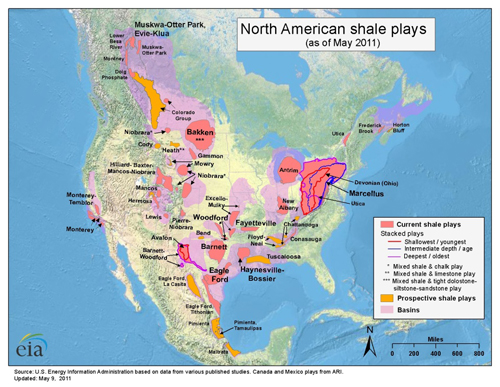WASHINGTON — The oil and natural gas industry called a U.S. Department of Energy panel’s recommendations for regulation of hydraulic fracturing “disappointing and confusing.”
An environmental watchdog group also was disappointed but for different reasons.
What is fracking anyway?
Hydraulic fracturing, or “fracking,” is the process of extracting natural gas from underground shale deposits. After a well is drilled, millions of gallons of water, chemicals and sand are injected into the well under high pressure to break apart (fracture) the rock and release gas. Opponents of fracking say the process could harm the environment, such as by leaking chemicals into drinking water. But supporters insist fracking is safe.
American Petroleum Institute President Jack Gerard praised the committee’s acknowledgement of the economic and energy security benefits of natural gas development but said the recommendations are deficient because the committee failed to adequately acknowledge existing programs and rules.
The Shale Gas Subcommittee of the Secretary of Energy Advisory Board issued recommendations Thursday in four areas: making information about shale gas production operations more accessible to the public; taking immediate and long-term actions to reduce the environmental and safety risks of shale gas operations, with a particular focus on protecting air and water quality; creating a Shale Gas Industry Operation organization committed to improving operating practices; and continuing research and development to improve safety and environmental performance.

A map of the locations and potential locations of shale gas. (Source: U.S. Energy Information Administration)
Stephanie Meadows, a senior policy adviser for API, said the industry group was surprised to see calls to address certain problems which API thought it had addressed.
For example, recommendations call for studies about methane migration into drinking water wells, which the industry is already investigating, she said.
This kind of misinformation, she said, could have been avoided by having shale natural gas industry representatives on the panel.
The report is the result of three months of deliberations among industry experts, environmental advocates, academics and former state regulators. But Meadows said the panel didn’t include people who work in the shale development industry and would be aware of its existing practices.
“We’ve had this concern all along,” she said. She said that some of the panelists may have had experience in the shale portion of the industry, their first-hand knowledge could have been 5 or 10 years old.
The industry reviews its standards and revises them at least every five years.
The Environmental Working Group, a watchdog group that advocates for environmental issues, also was unhappy about who was chosen for the panel but for a different reason. Six of the seven committee members had ties to the oil and gas industry, compared with only one environmental representative, the group said.
Dusty Horwitt, senior counsel for the group, disputed Meadows’s argument that the energy industry representatives on the panel don’t have up-to-date experience in shale gas development. Two of the panelists, Mark Zoback and Stephen Holditch, have current ties to the shale gas industry.
He also said it is hard to see what was different about what the panel recommended. Some things, such as public disclosure and making some places off-limits to hydraulic fracturing — popularly known as “fracking” — are obvious recommendations. Of greater concern to him is the fact that there are seven exemptions for the industry from major federal environmental laws.
“They seemed more interested in protecting the industry’s public relations than in protecting the public,” he said.
Gerard said the industry already operates under “extensive” environmental and safety regulations.
“We urge the committee to revise its recommendations to better reflect the facts on hydraulic fracturing, the extensive regulations under which the industry operates, and the industry’s new best practices,” he said.
A final draft of the subcommittee’s report is due in November.
